Special Report
20 Surprisingly Dangerous and Common Things in Your Home

Published:
Last Updated:

People often spend hundreds of dollars on security systems to protect their property from intruders and outside dangers that are beyond their control, such as flooding. But many families are unaware of the dangers inside the home.
24/7 Tempo compiled a list of potentially hazardous objects and materials often found in the household by reviewing information from government agencies and nonprofit organizations.
Many unintentional injury-related deaths happen at home – and part of them are due to poisonings caused by gases, chemicals, and other substances, according to the National Safety Council. But why were there gases and other chemicals in the household in the first place? Often the reason is seemingly innocuous everyday products that were used or stored improperly. And just like you think some products are harmless, even though they are not, there are some “harmless” habits that are actually doing you more harm than you can imagine.
People make their homes their sanctuaries where they feel comfortable and safe. The last thing they need is some common item that has the potential to harm them and their families. But harm can come from fires, gases, chemical, even wood furniture.
Click here for the 20 common and surprisingly dangerous things in your home
Methodology
To compile a list of potentially hazardous objects often found in the household, 24/7 Tempo reviewed reports by government agencies such as the Centers of Disease Control and Prevention and nonprofit organizations such as the National Fire Protection Association. Many household cleaning products can be hazardous to human health, especially if used or stored improperly. We’ve broken them down into a few specific categories.
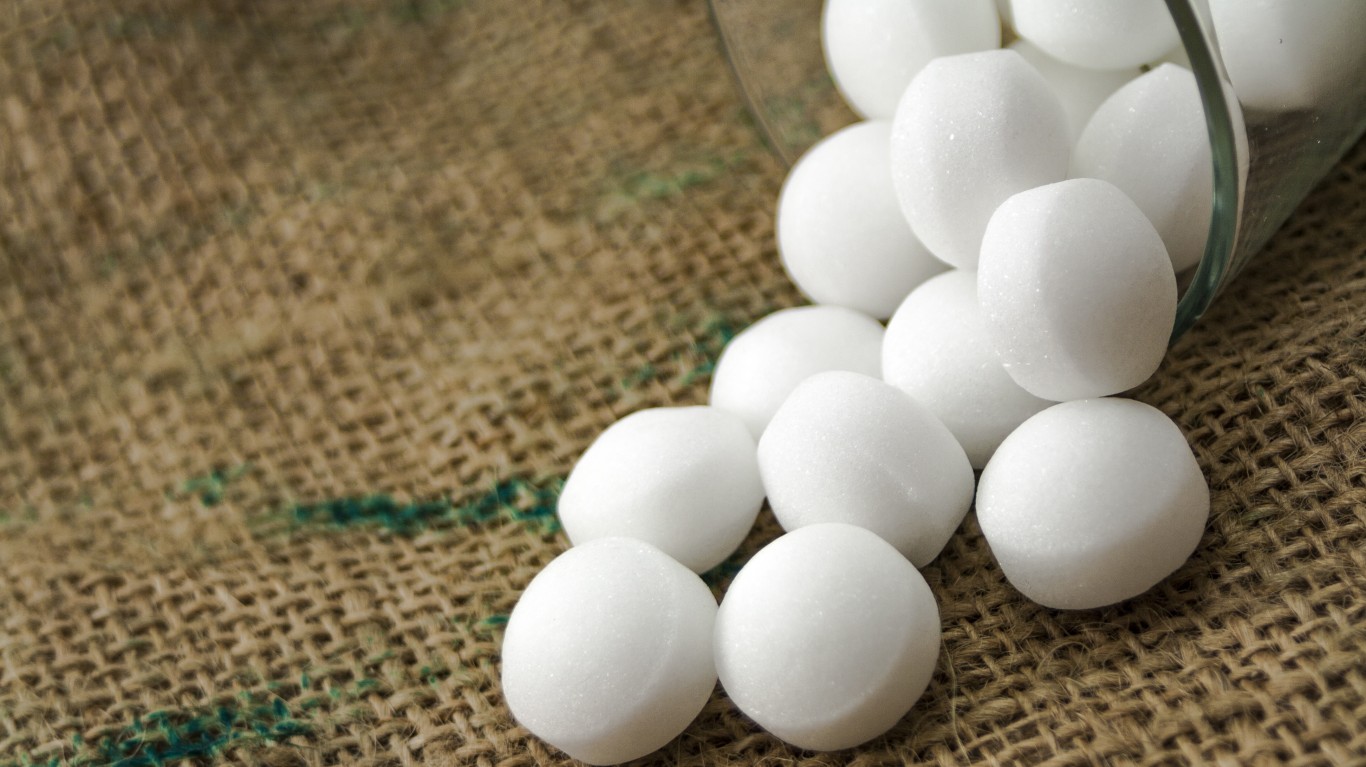
1. Mothballs
Their looks might be deceiving, but never forget that mothballs are pesticides, according to the National Capital Poison Center. Children may play with them because they look like candy, but they can be toxic if swallowed or if fumes are inhaled. Naphthalene, a chemical ingredient found in mothballs, can cause kidney damage, stomach pain, seizures, and can even lead to coma.
[in-text-ad]

2. Pressed wood furniture
Pressed wood products can contain formaldehyde, a colorless gas with an irritating smell that acts as glue when such products are manufactured. Materials with formaldehyde can release its vapor into the air, according to the American Cancer Society. Gas stoves, wood-burning stoves, and kerosene heaters can increase formaldehyde levels inside your home as well. The gas is dangerous when a person is exposed to relatively high amounts of it — at home the exposure can be limited by taking certain measures such as buying higher grade pressed wood and not smoking inside, while occupational exposure may present the greater risk. It increases the risk of some types of cancer, including leukemia and cancer of the nasal sinuses.
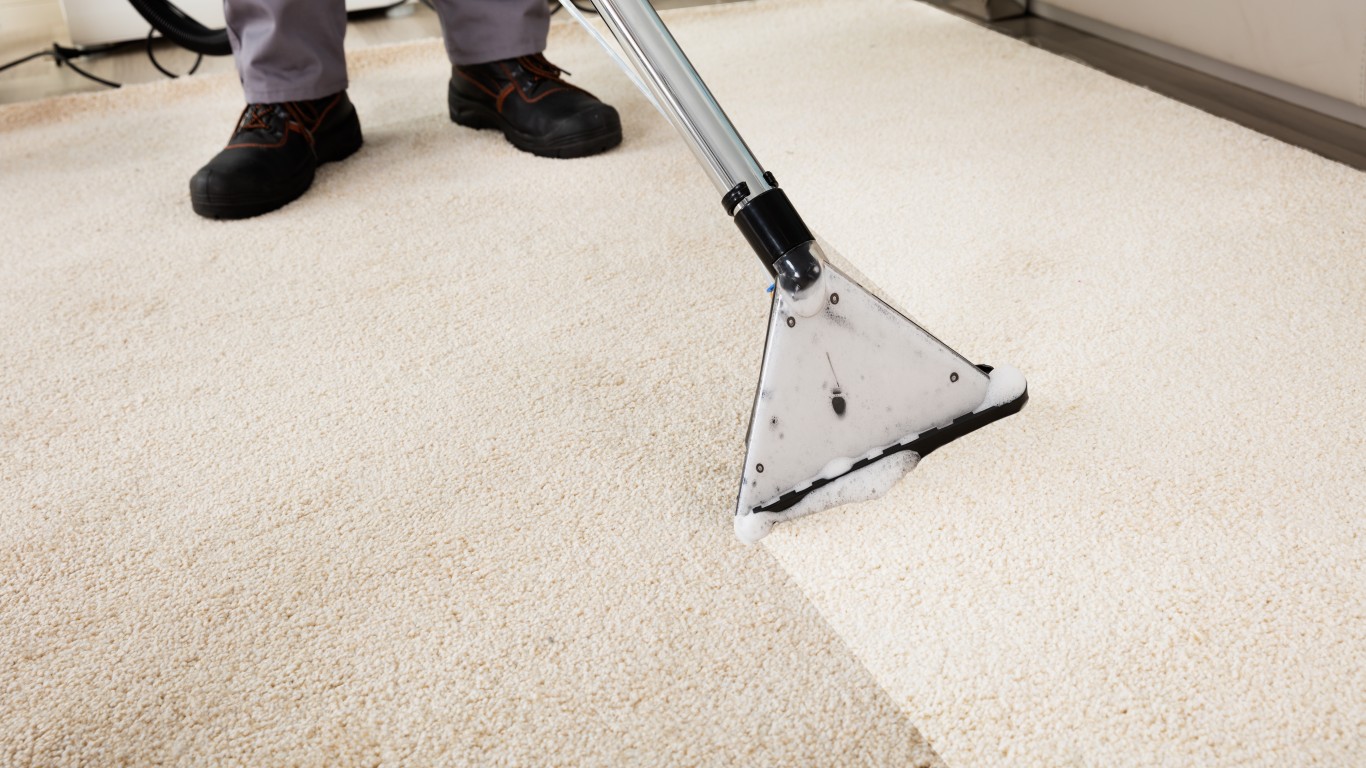
3. Carpets
Carpets can certainly look good in a home, and they can help reduce noise neighbors may hear. But they are a magnet for allergens and pollutants, including dust mites, fine particulate matter, mold spores, lead, dust, dirt, pet dander, and pesticides, according to the American Lung Association.
Chemicals are another potential danger. During manufacturing, some new carpets are treated with volatile organic compounds (VOCs). If these are released and the person is exposed, they can cause such symptoms as headaches, dizziness, and irritated eyes in the short-term and even lead to liver damage and cancer if the exposure is long term, according to the National Institutes of Health.
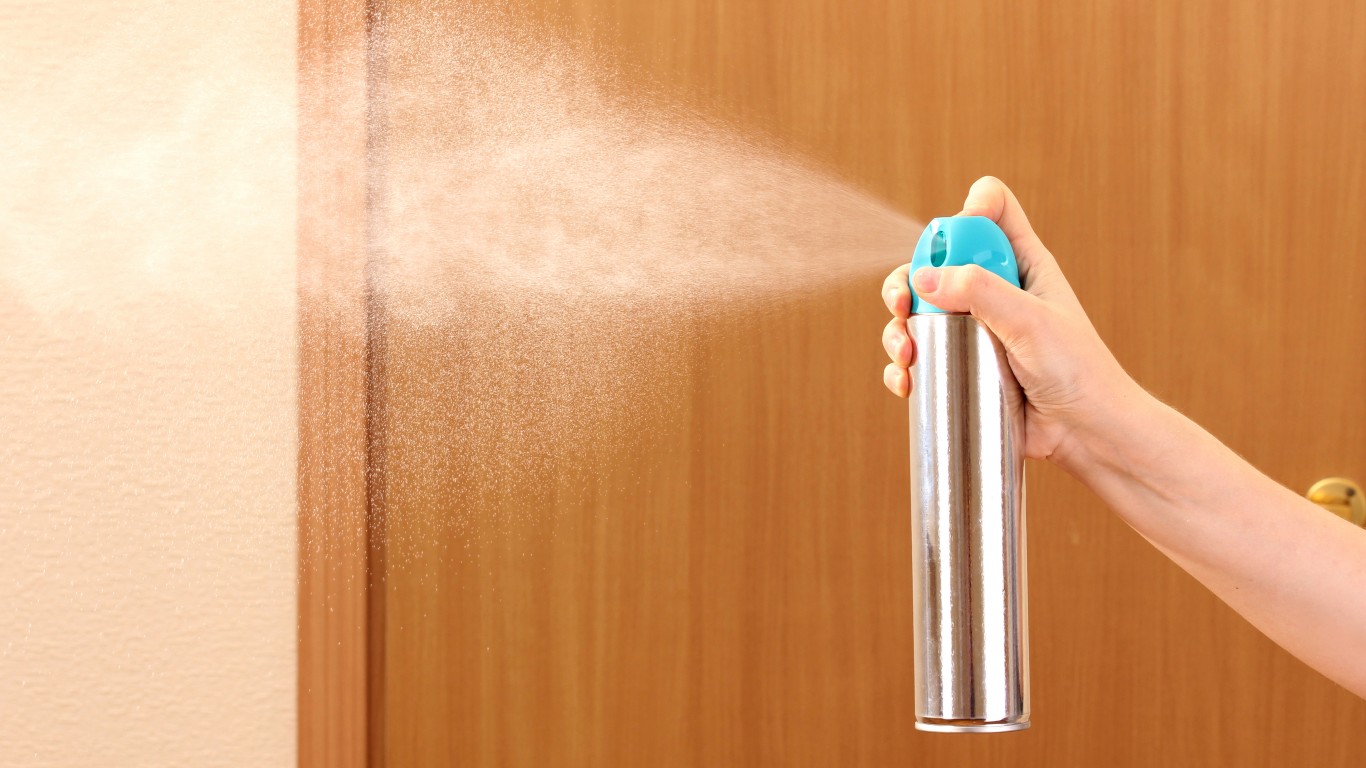
4. Air fresheners
Air fresheners are very popular — and very useful when you want to make your home smell of something pleasant quickly. But some research has shown that even organic and green products can emit a chemical that can be harmful to human health. About 90% of the ingredients that air fresheners contain are unknown and/or unreported. Such scented products had been found to emit more than 100 VOCs, including some known to be toxic and classified as hazardous by federal law.
[in-text-ad-2]
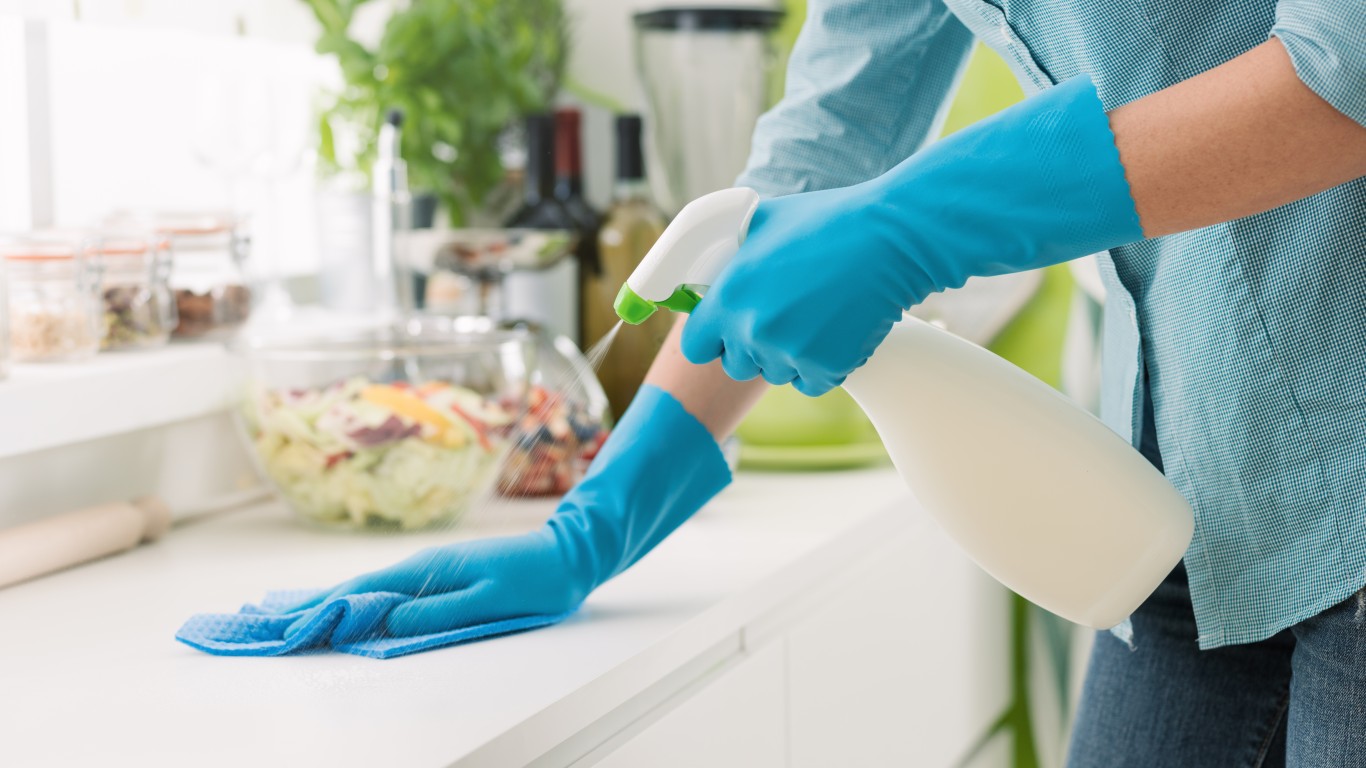
5. Cleaning sprays
Cleaning supplies, even the “green” and “natural” type, often include hazardous chemicals, according to the American Lung Association. Spray products are just one type of household products that contain VOCs and other toxic ingredients. A recent study that followed more than 6,000 people for two decades found that regular use of cleaning sprays caused damage to the lungs similar to the damages caused by smoking 20 cigarettes a day for 10 to 20 years.
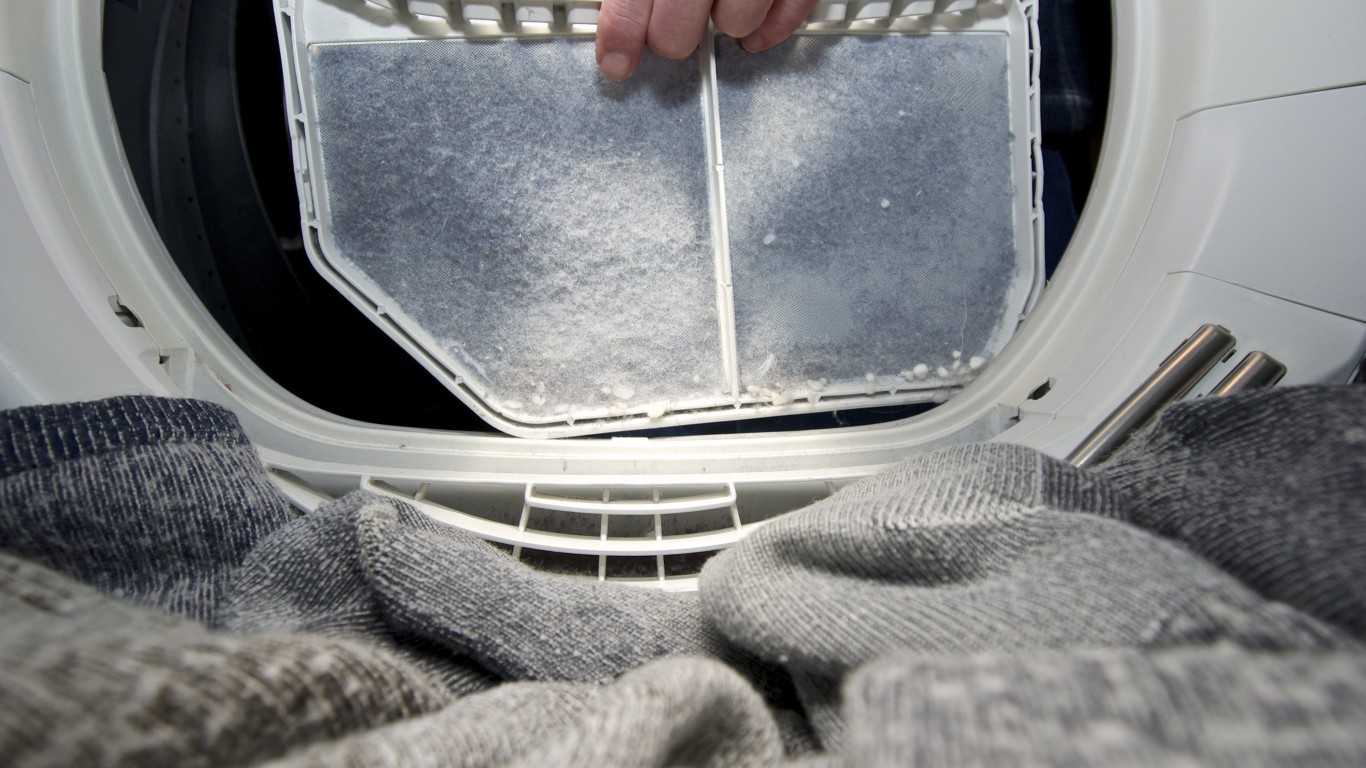
6. Dryers
Dryers are a fire hazard. While nearly 3,000 home clothes dryer fires are reported to the U.S. Fire Administration every year, the National Fire Protection Association says it responds to as many as almost 15,000 such fires every year. Most of the time, the cause of the fire is not cleaning the dryer. Most such fires occur in the fall and winter, peaking in January. Make sure to clean the lint filter, replace the accordion-style ducts, clean the dryer duct at least once a year, and hanging chemically stained clothes — such as gas, cooking oil, and cleaning supply stains — to dry after washing them.
[in-text-ad]
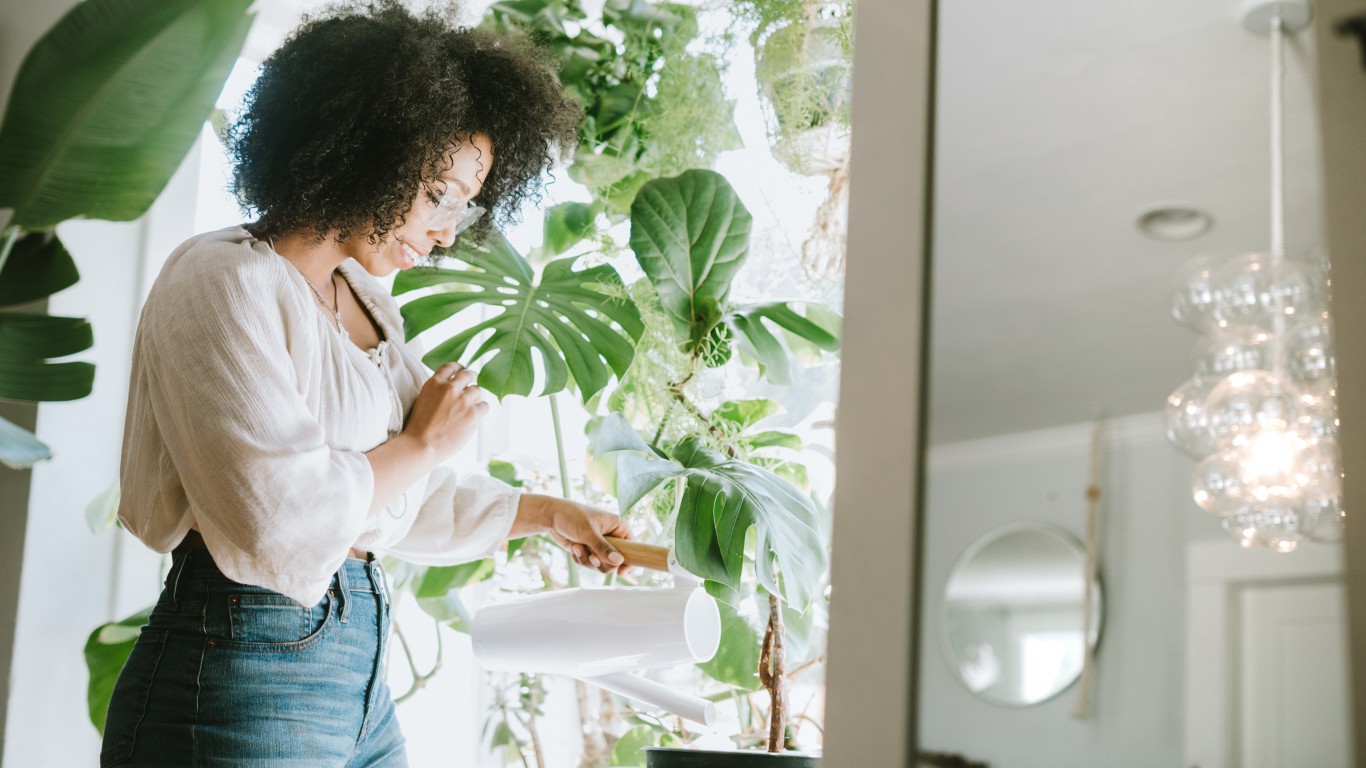
7. Some indoor plants
While plants can help any place look much better, they can hide some dangers. You might want to inquire before buying a plant as some may require special care, and others can be poisonous. They can cause skin irritation or burns and stomach problems. Some examples include daffodils, dumb cane, English ivy, and oleanders. And while some plants are not too dangerous for humans, they can kill cats and dogs if they ingest them.

8. Oven cleaners
Fumes from spray oven cleaners are easily inhaled into the lungs. These products contain lye and sodium hydroxide (household bleach), which are corrosive. They can irritate the eyes and burn the skin upon contact. When combined with other cleaning products, some oven cleaners can even produce chloramine gases, which can lead to lung injury.
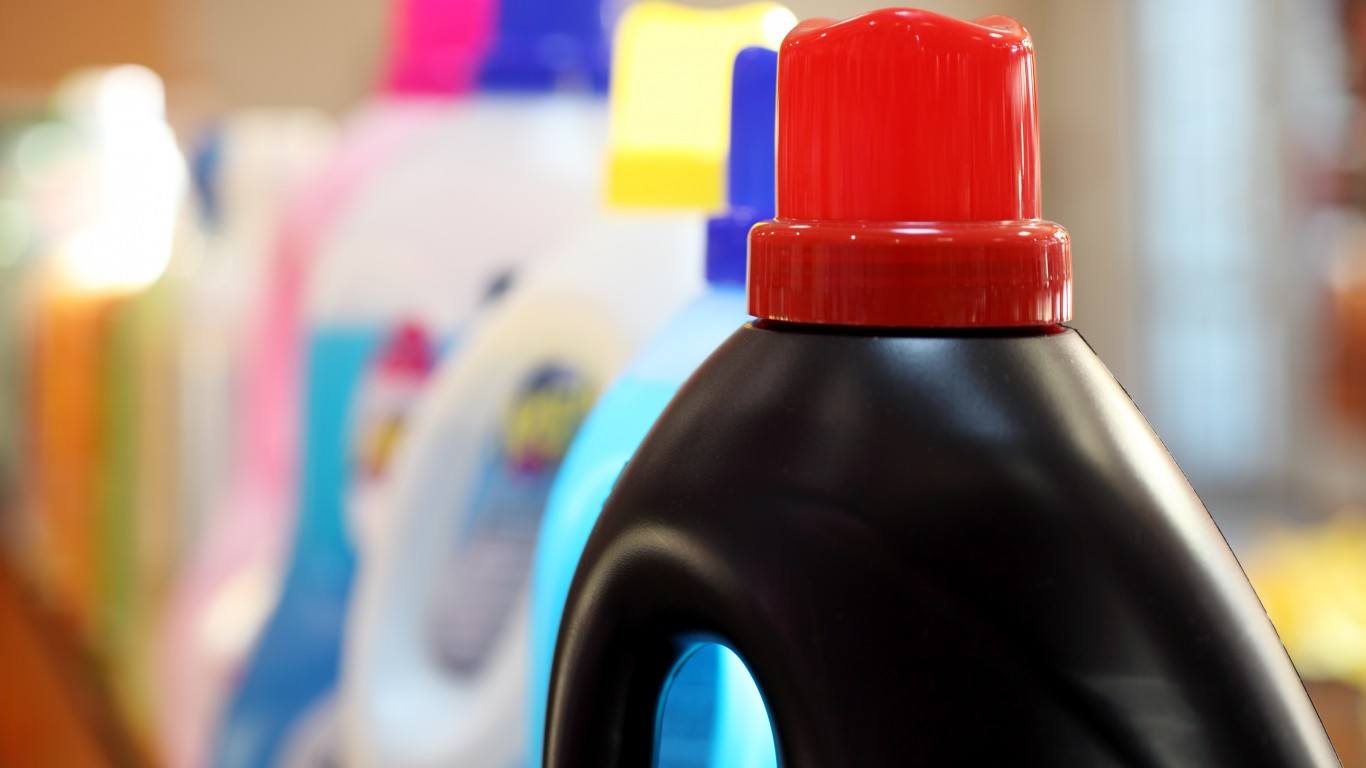
9. Bleach
Bleach is among the most common cleaning and disinfection products used because it kills many viruses and bacteria. But bleach is also corrosive and can cause skin irritation and cell death. It can be especially dangerous if mixed with ammonia and toilet bowl cleaners, according to the National Institutes of Health. If mixed, chlorine gas, an asphyxiant, is released, and this can be deadly is large doses. Even mixing bleach with vinegar can release the toxic chlorine gas.
[in-text-ad-2]

10. Big TV screens
The bigger the better, right? Not so much. The right TV screen size largely depends on the dimensions of the room, not your personal desire for a movie theater experience at home. You should be sitting between 8 and 10 feet away from the screen, or at a distance that is at least five times the screen’s width. The TV should also be at eye level or lower to prevent neck as well as eye strain, which can lead to blurred or double vision as well as headaches.
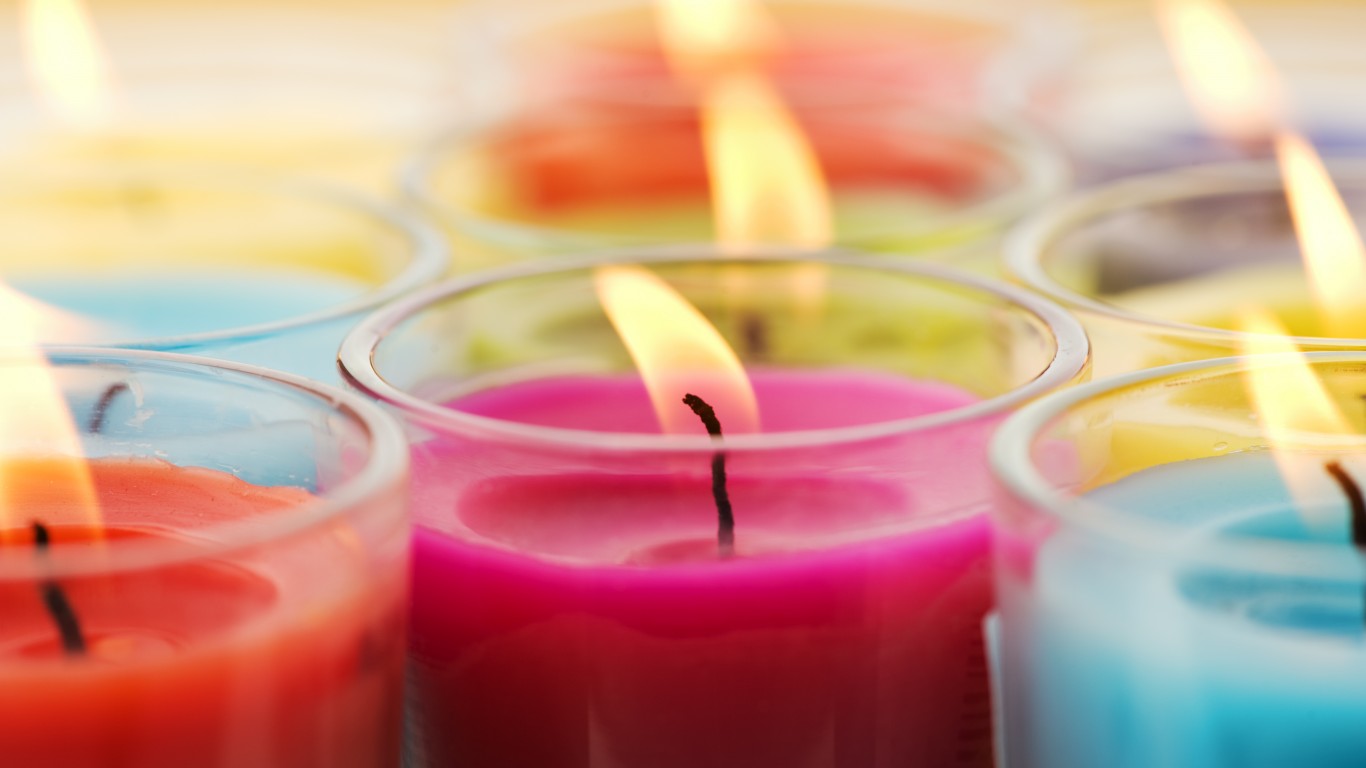
11. Scented candles
The problem with scented candles is in the wax. Most candles are made from paraffin, a petroleum byproduct. When burned, the wax can release harmful VOCs, including benzene, which is a carcinogen. When scented candles are burned, they give off very small particles that make their way into our blood and organs, potentially causing breathing and cardiovascular problems.
[in-text-ad]
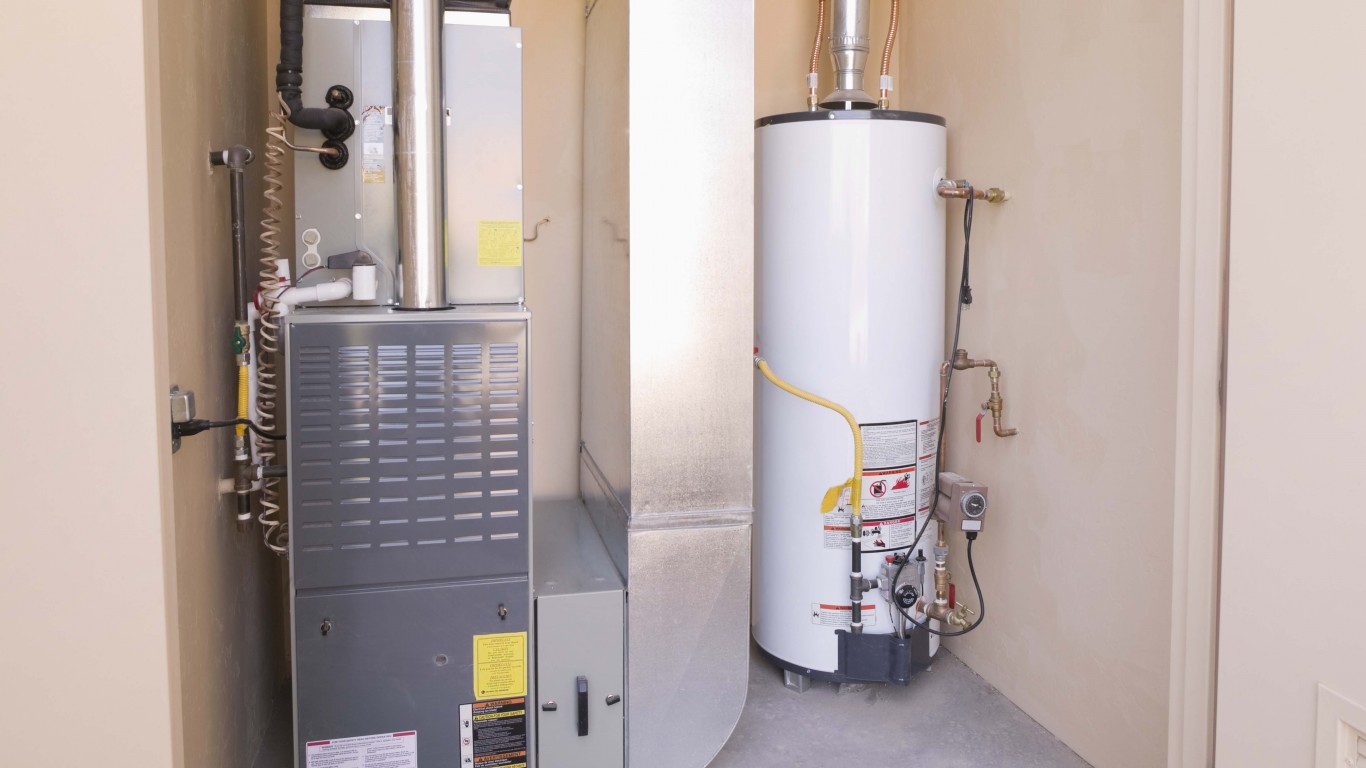
12. Furnaces
Like most heating systems, furnaces pose two major risks — carbon monoxide poisoning and fire, according to the U.S. Consumer Product Safety Commission. Make sure the furnace in your home is serviced by a professional at least once a year. Keep fire extinguishers near furnaces and make sure you have a carbon monoxide detector, just in case.
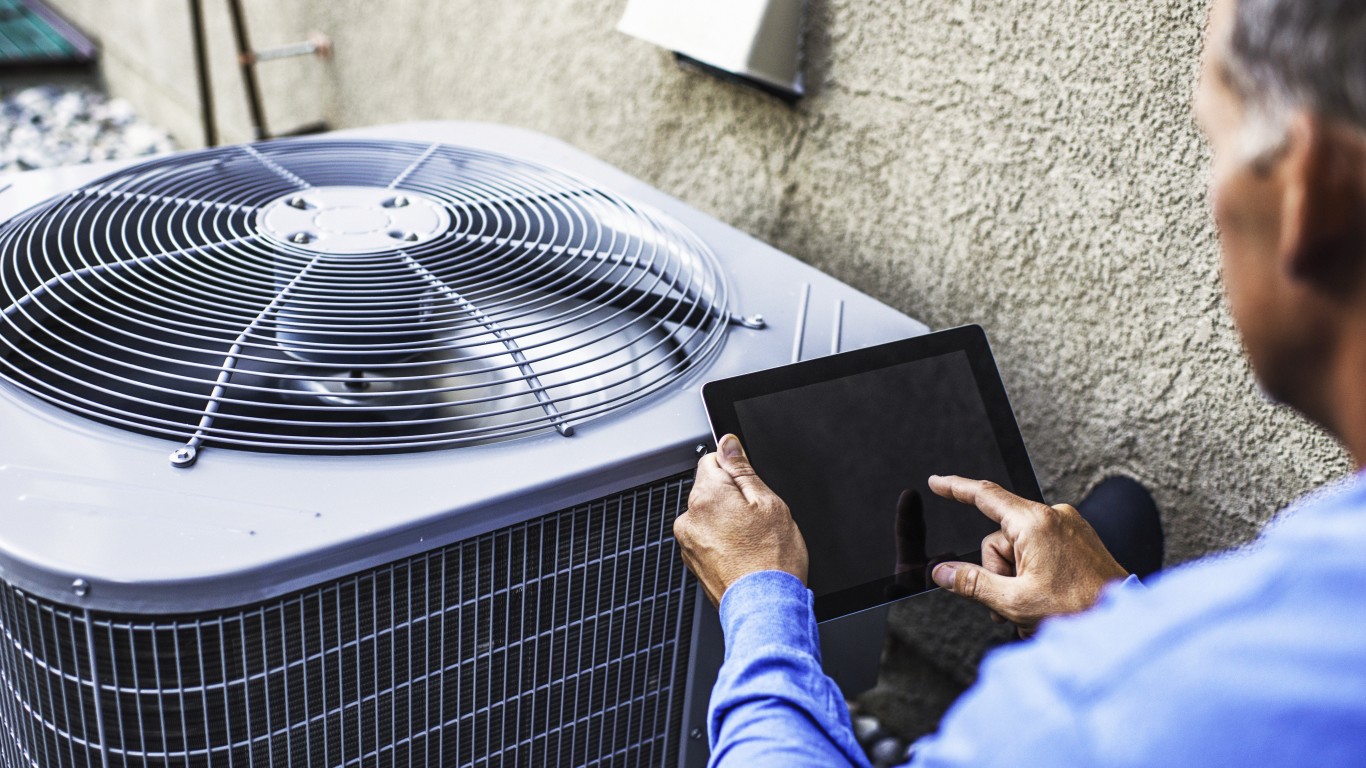
13. Air conditioners
It often feels like we can’t make it through the summer without air conditioners. But they need to be properly used and maintained. Otherwise, they pose a serious health risks, especially when mold grows inside, according to Consumer Reports. Mold exposure can cause nasal stuffiness, throat irritation, coughing or wheezing, and eye and skin irritation, according to the Centers for Disease Control and Prevention. Make sure you clean the AC filters frequently and the coils at least once a year.

14. Juice blenders
You can accidentally cut your finger in a blender, but this is not very common. A problem most people may not realize with juice blenders is that they are not cleaned often enough. You need to clean the bottom thoroughly. There is a gasket that collects food particles and where bacteria and mold can stay and grow.
[in-text-ad-2]
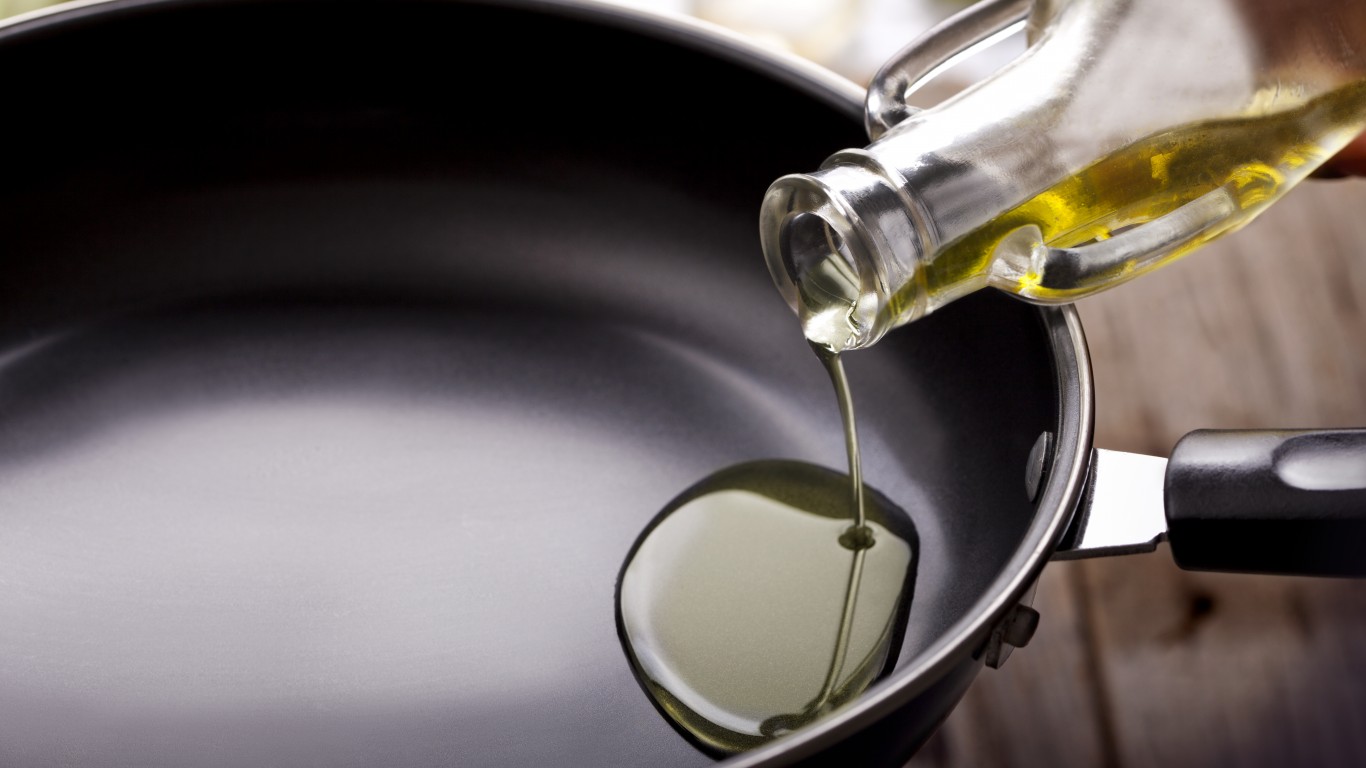
15. Non-stick cookware
Non-stick cookware are made with Teflon, the commercial name for a chemical known as polytetrafluoroethylene (PTFE). Perfluorooctanoic acid (PFOA), another chemical, is used to make Teflon. Although little amount of PFOA ends up in the final non-stick pots and pans, whatever amount makes it in the body can stay there for a long time, according to the American Cancer Society, and can potentially increase the risk of certain cancers. Exposure can occur when pans are overheated or scratched. As a result of growing concerns over the long-term effects of PFOA, companies are phasing it out of production.
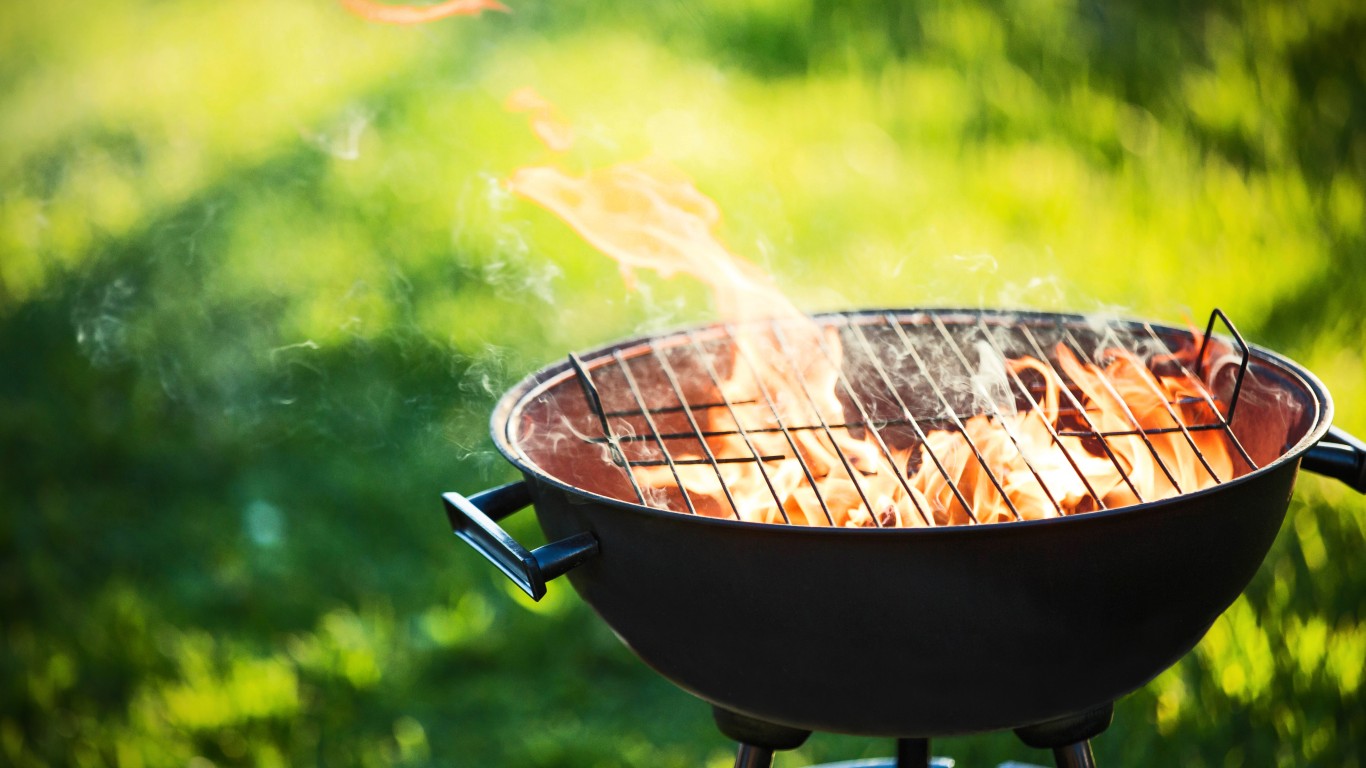
16. Grills
About 70% of adult Americans have a grill at home, according to the National Fire Protection Association. But they are a significant fire hazard. Between 2013 and 2017, there were an average of 10,200 home fires involving grills, hibachis, or barbecues per year. Gas grills accounted for most of the fires. The most common problems with them were leaks and breaks.
[in-text-ad]
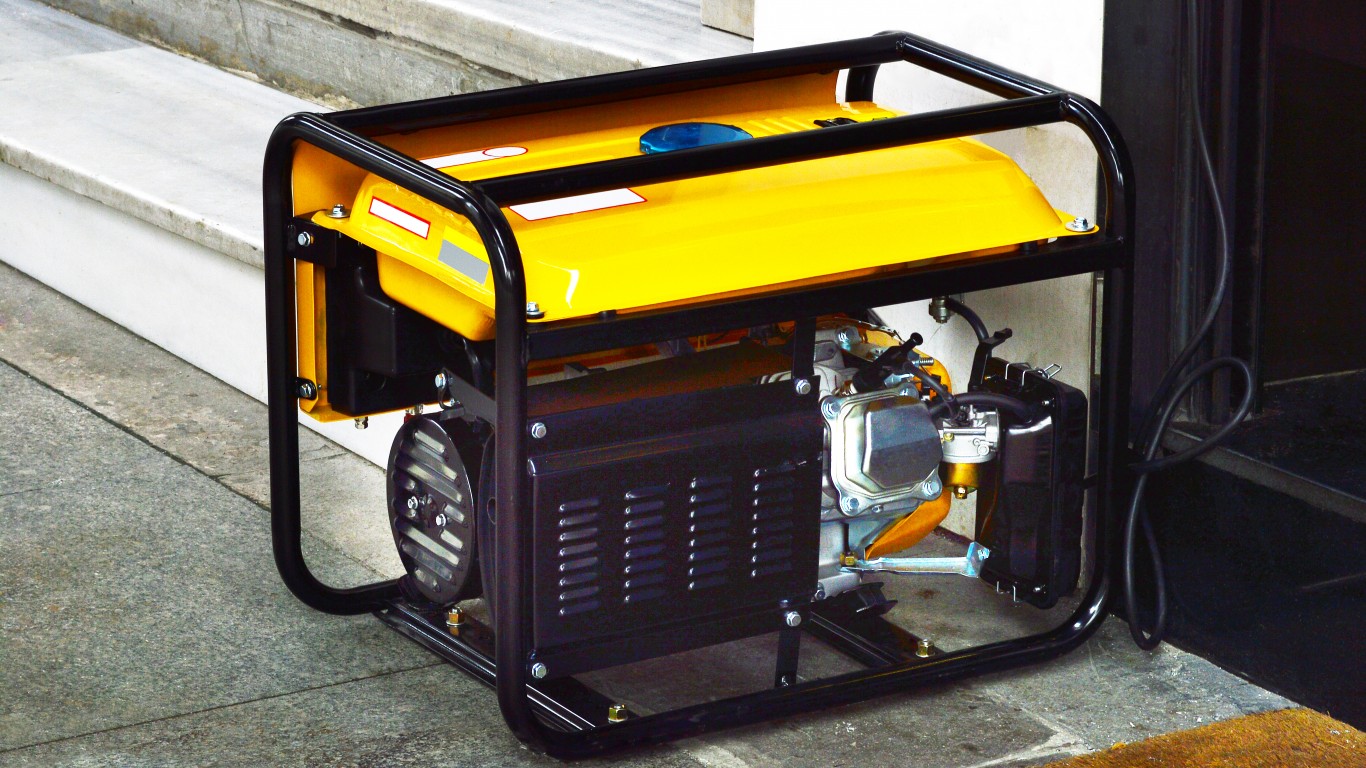
17. Portable generators
No one is denying the importance of portable generators during prolonged power outages, but generators need to be properly stored and used. Otherwise, in addition to being fire hazards, portable generators can pose a risk of carbon monoxide poisoning and electrocution. Portable generators were the cause of most carbon monoxide deaths involving engine-driven devices between 1999 and 2012.
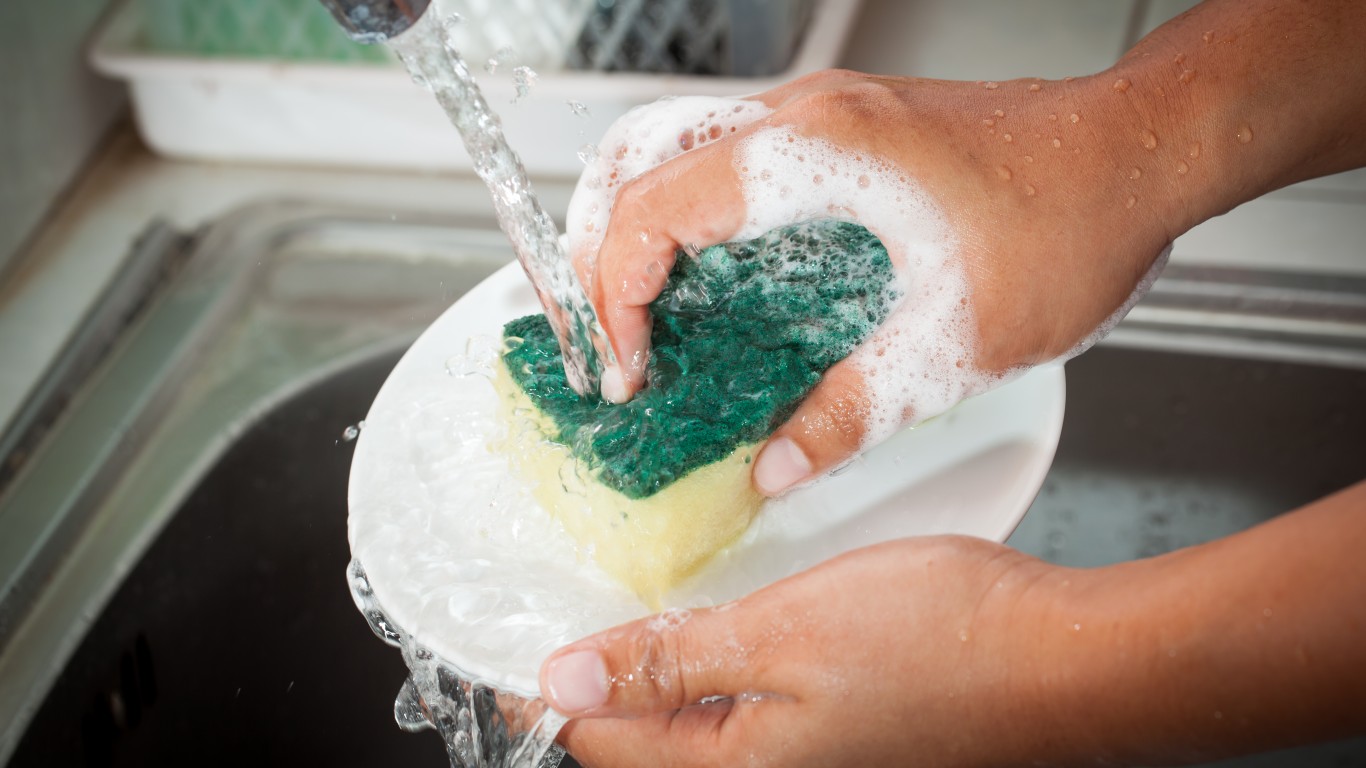
18. Dish sponge
Dish sponges are dirtier than toilets, with more than 10 million bacteria residing in every square inch of this kitchen necessity. A 2017 study found that even after sterilizing it, 362 kinds of bacteria remained in the sponge. While most of the bacteria found were not harmful, some could cause serious infections. These included E. coli, salmonella, and staphylococcus. Wash and change your kitchen sponges frequently.
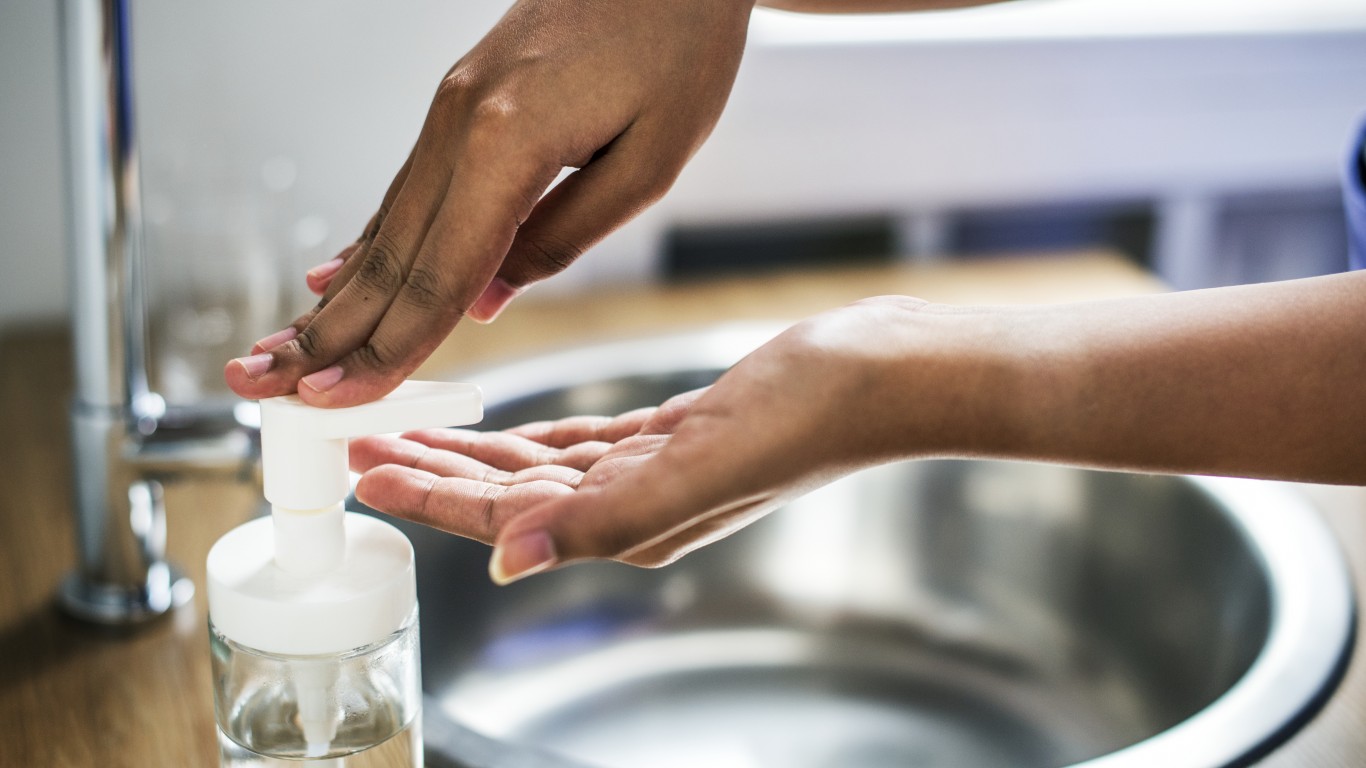
19. Antibacterial soap
Plain soap and water are enough, according to the Food and Drug Administration (FDA). There simply isn’t enough scientific evidence to prove that antibacterial soaps are more effective at cleaning your hands. Over the years, the FDA has banned at least 20 antibacterial additives and ingredients found in over-the-counter soaps. Some because there is no proof they are safe after long-term exposure, and some may even be potentially carcinogenic. Another reason for avoiding antibacterial soaps is that these soaps can make bacteria resistant to antibiotics.
[in-text-ad-2]

20. The couch
The couch is very tempting, especially after a long day at work. Many people just want to sit down, watch TV, and relax. But then you risk not getting off the couch for hours. And sitting is the new smoking, as they say. People who sit too much are at higher risk of heart disease, dementia, diabetes, and cancer. There are some signs you may be having one of these serious health problems.
The Average American Is Losing Momentum On Their Savings Every Day (Sponsor)
If you’re like many Americans and keep your money ‘safe’ in a checking or savings account, think again. The average yield on a savings account is a paltry .4%1 today. Checking accounts are even worse.
But there is good news. To win qualified customers, some accounts are paying more than 7x the national average. That’s an incredible way to keep your money safe and earn more at the same time. Our top pick for high yield savings accounts includes other benefits as well. You can earn a $200 bonus and up to 7X the national average with qualifying deposits. Terms apply. Member, FDIC.
Click here to see how much more you could be earning on your savings today. It takes just a few minutes to open an account to make your money work for you.
Thank you for reading! Have some feedback for us?
Contact the 24/7 Wall St. editorial team.